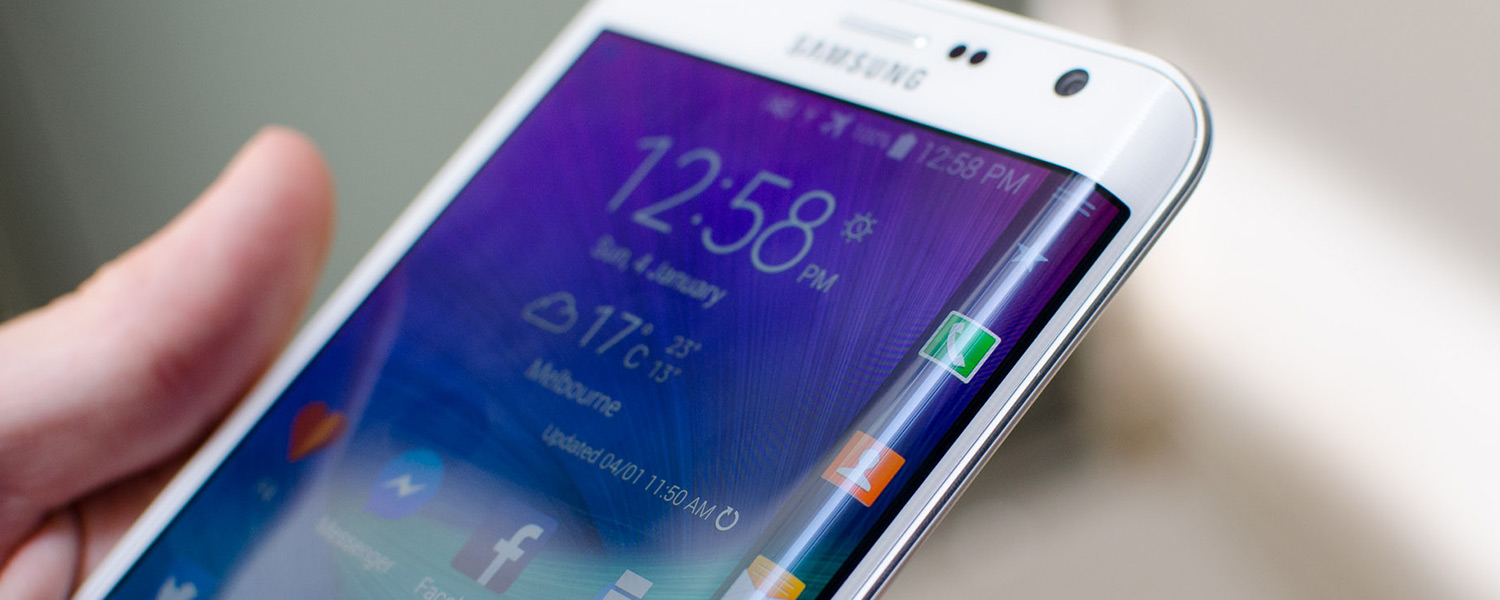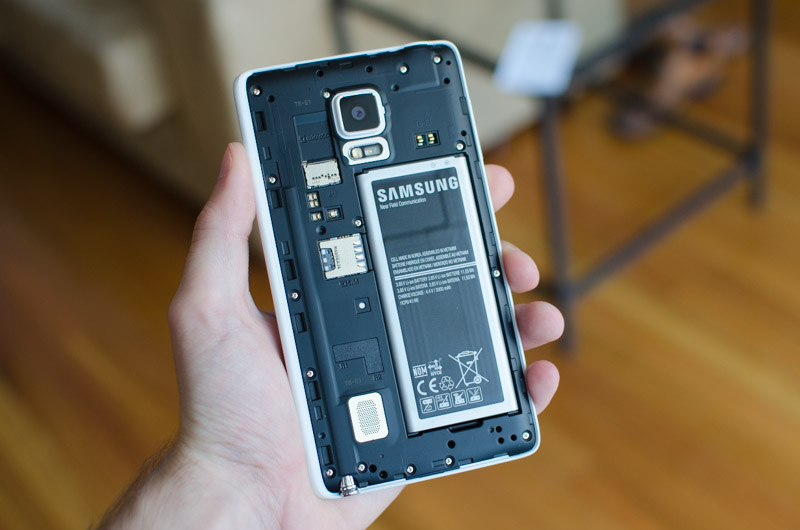Battery Life
The internal battery in the Samsung Galaxy Note Edge is rated at 3.85V and 3,000 mAh, for a total capacity of 11.55 Wh. Thanks to the curved display taking up some of the space otherwise used for components, the Note Edge's battery is smaller than the Note 4's, the latter of which is rated at 12.4 Wh. This makes the Note Edge's battery 7% smaller.
Despite the Note Edge's display being listed as 5.6-inches diagonally, compared to 5.7-inches on the Note 4, the total surface area of the display is marginally larger on the Note 4. Luckily the display uses AMOLED technology, so when the Edge screen isn't being used (and thus is blank/off) the power consumption from both displays should be very similar.
If you're curious about the exact numbers, the display area for the Note Edge in most applications is 5.51 inches diagonally with a resolution of 2560 x 1532. This is 4% smaller in screen area than the Note 4. When the entire display is being used, the Note Edge has 1.5% more screen real estate.
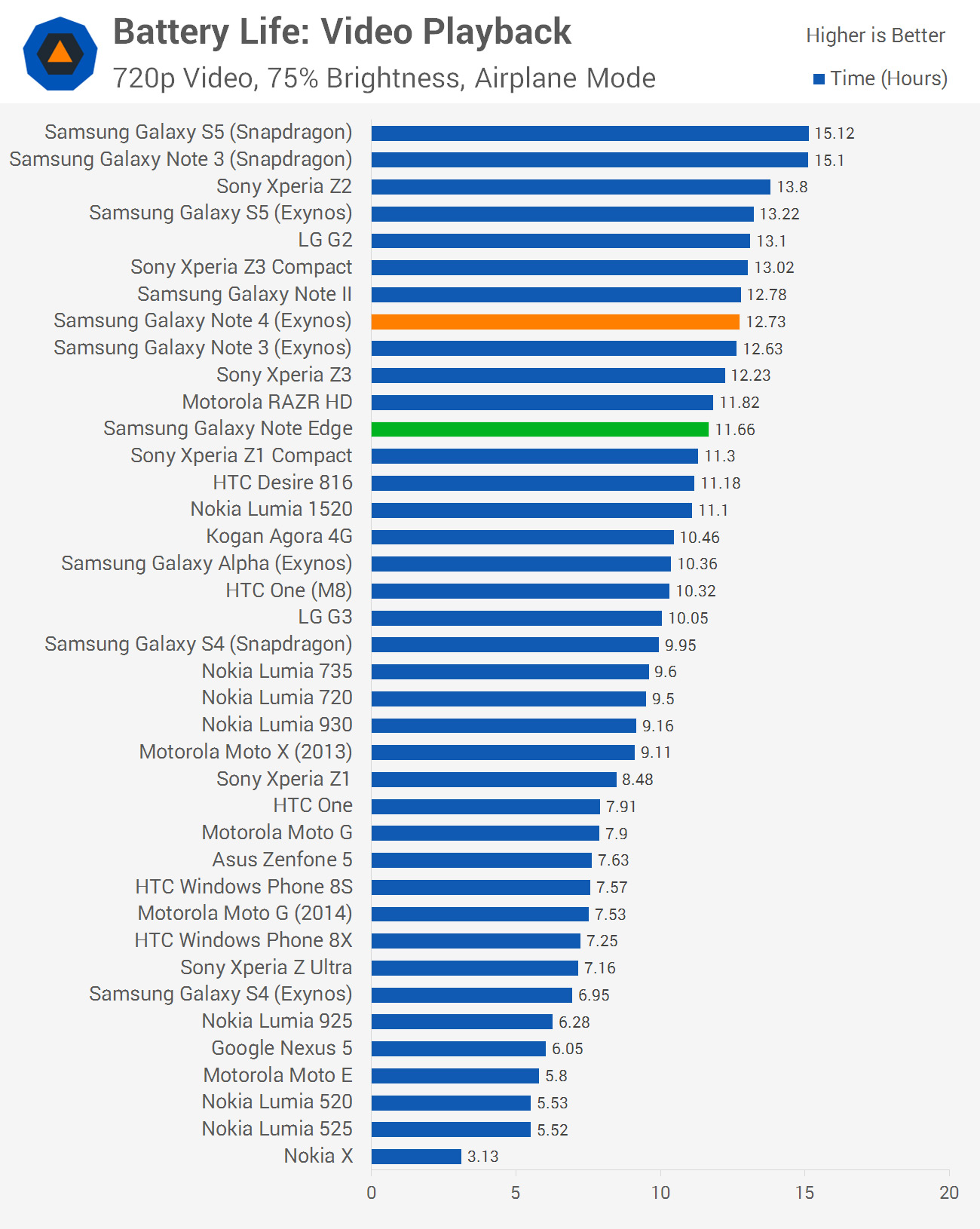


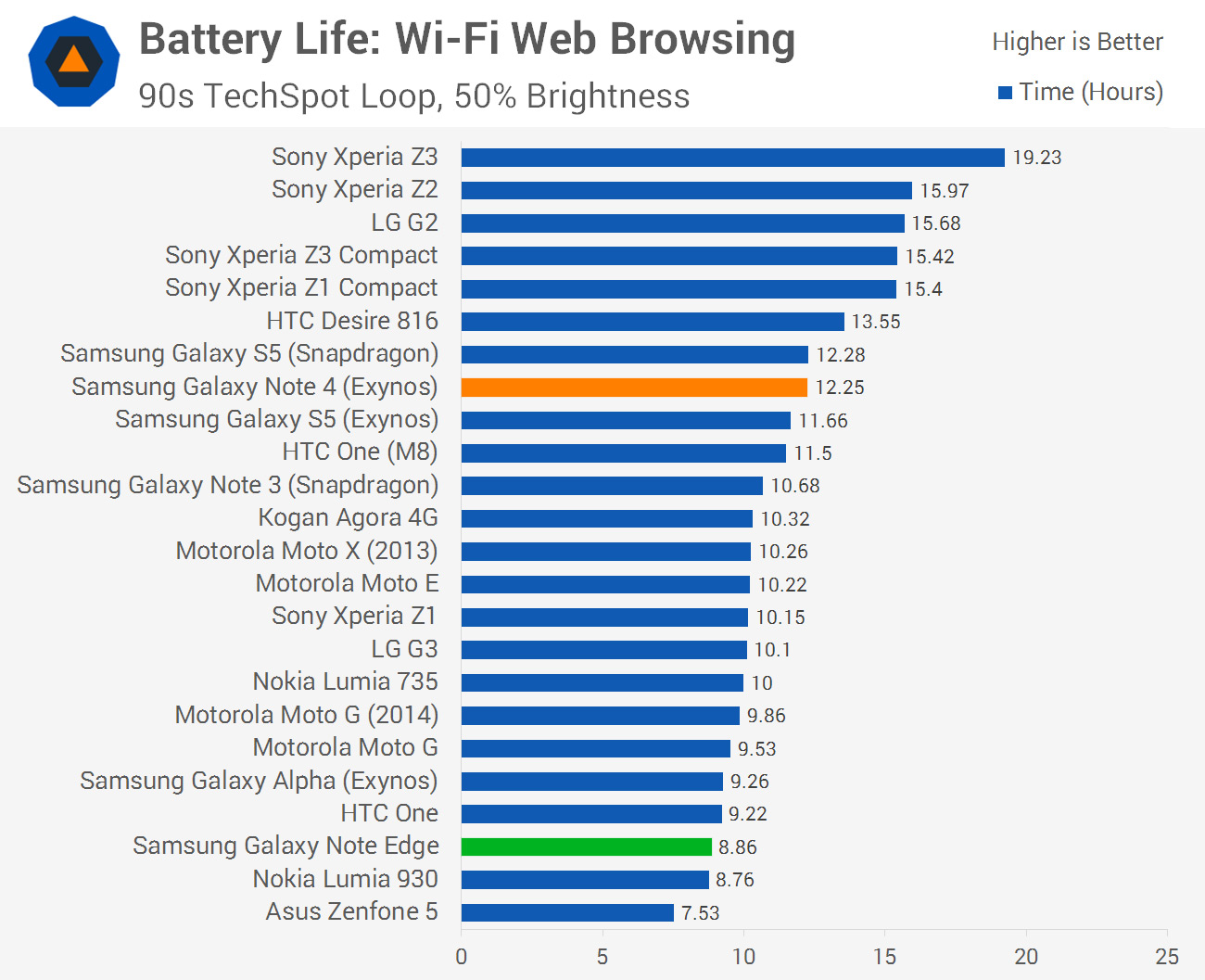
Generally I found the Note Edge's battery life to be disappointing, especially compared to the solid battery performance from the Note 4. Wi-Fi and 4G web browsing tests were especially poor, and I even verified these benchmarks twice to ensure it wasn't just an anomaly.
On average, compared to the Exynos variant of the Note 4, the Note Edge delivered 19% less battery life.
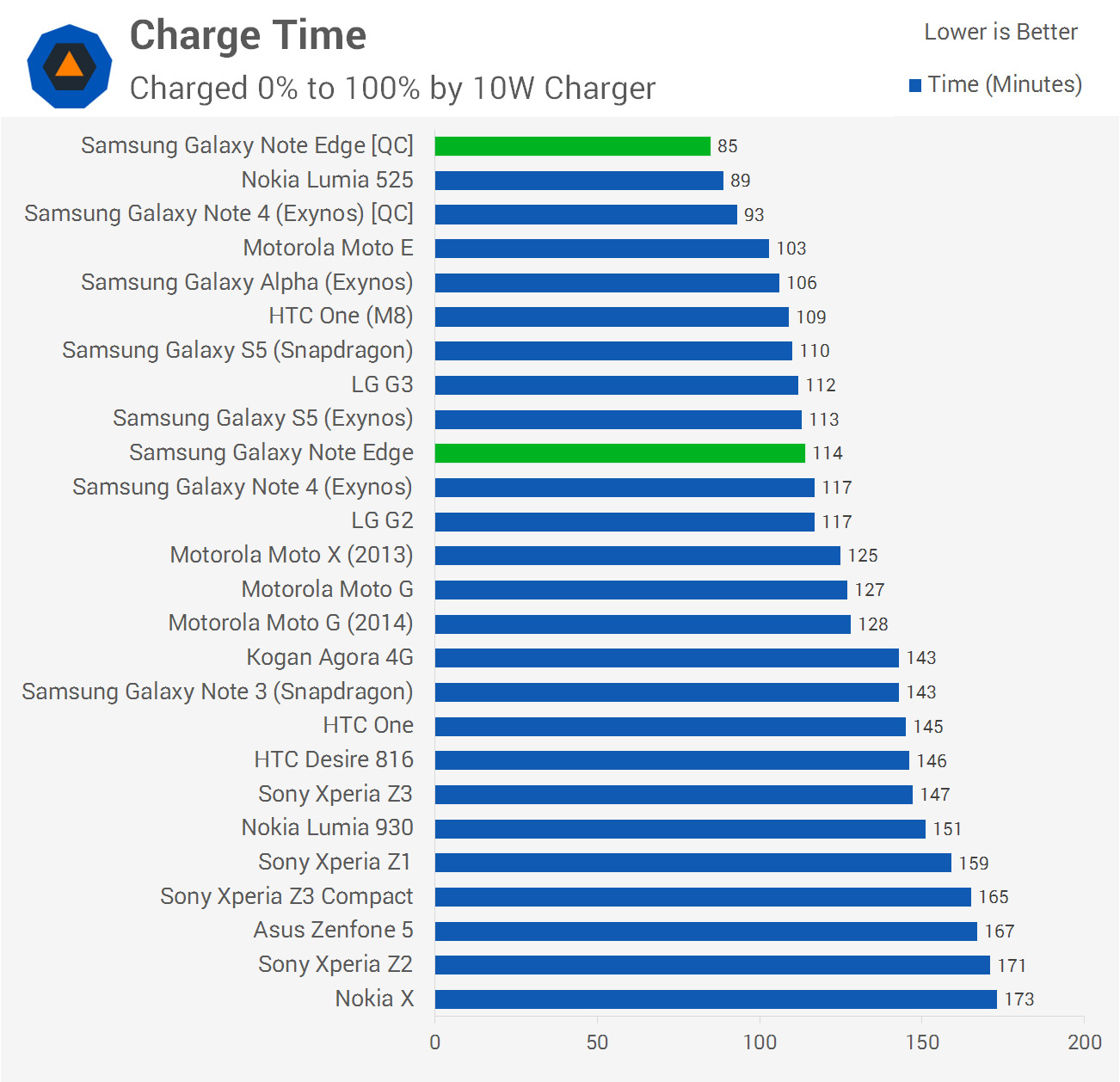
Using the included quick charger will let you shave off half an hour or so from a full battery charge. The quick charger is especially speedy at charging between 10 and 60 percent capacity.
The very same power saving features found in the Galaxy Note 4 are available in the Galaxy Note Edge, including Ultra Power Saving mode.
